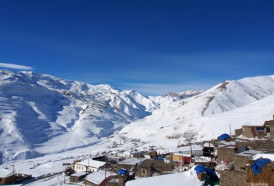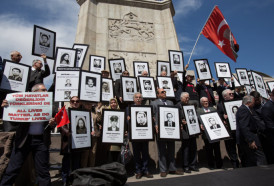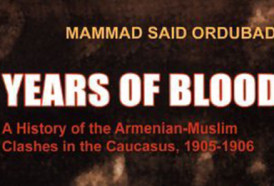On February 5, correspondent Nina Niebergall published a biased and distorted article on the Karabakh issue on the official website of the German public television "Zweites Deutsches Fernsehen". German scientist Mikhail Reinhard Hess, who is the author of the book titled as ‘Shusha's heritage. History and development path of the cultural capital of Azerbaijan’ has shared a protest letter to that article as a reader on his Facebook account and addressed it to ZDF, AzVision.az reports citing the State Committee For Affairs Of Refugees and Internally Displaced Persons Of The Republic Of Azerbaijan.
“Nina Niebergall's article has touched on the Karabakh problem. Like other German media, this public broadcaster also presents the essence of the conflict from the Armenian point of view.
The bias can be seen in this sentence: “The territory inhabited mainly by Armenians was under the control of Armenians before its subordination to the Russian Tsarist Empire at the beginning of the 19th century.’’ The German scientist writes that proofs for this can only be found in the history books written by Armenians. Five Confederation of Karabakh Beyliks – also known as Khamsa was a regional union, especially during the politically tense period between the fall of the Safavid dynasty (1736) and the death of Nadir Shah (1747), around 1750, the Khan of Karabakh before subjugating the small principalities had a certain local and temporary power. The Karabakh Khanate (later became "Nagorno-Karabakh Autonomous Province"), which was founded around 1747 existed as an independent state until its de facto (1806) and de jure (1822) abolition by Russia, and its rulers were Muslims, speaking Azerbaijani.
Correspondent of ZDF rejected the long-term existence of the Safavids Dynasty (1501-1736), as well as the formation of these territories by the linguistic ancestors of today's Azerbaijanis for centuries.
There is another distorted fact in the reportage: “With the formation of the Soviet Union, the territories were divided. In 1923, a part of it was transferred to the Azerbaijan Soviet Republic, and its core became an autonomous province". From the context, it follows that the "territory" should belong to "Nagorno-Karabakh". If the quoted sentence is correct, then "Nagorno-Karabakh" should be divided after the formation of the Soviet Union (1922), and a part of the divided territory should become an "autonomous". In fact, the Nagorno-Karabakh Autonomous Province was not divided between 1921 and 1923, it was created for the first time. It is not a part of this autonomous province, nor any of the territories surrounding it "passed" to the Azerbaijan Soviet Republic. All of them have always been part of the Azerbaijan Soviet Republic or its predecessor - the Azerbaijan Democratic Republic (1918-1920). Niebergall's thesis is self-refuting here.
Another incorrect thesis is the fact that calling Ruben Vardanyan the "minister of state" of "Nagorno-Karabakh" can only be an imaginary wish. In another point, Niebergall mentions that the "state of Nagorno-Karabakh" did not exist either before or now, even Armenia itself does not recognize it. How can there be a "state minister" of a non-existent state?
More about: #GermanMedia #Armenianlies #history #NagornoKarabakh
















































